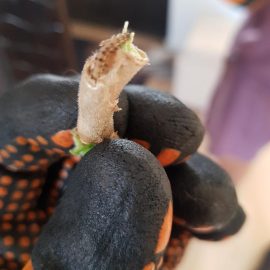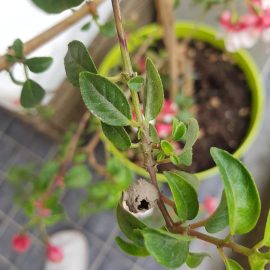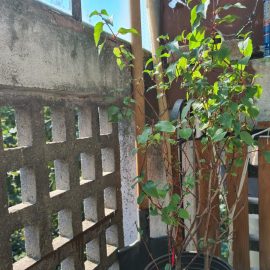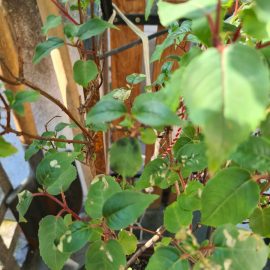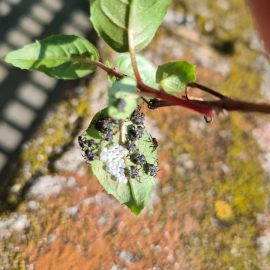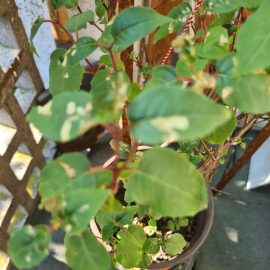Fuchsia, plant care and growing guide
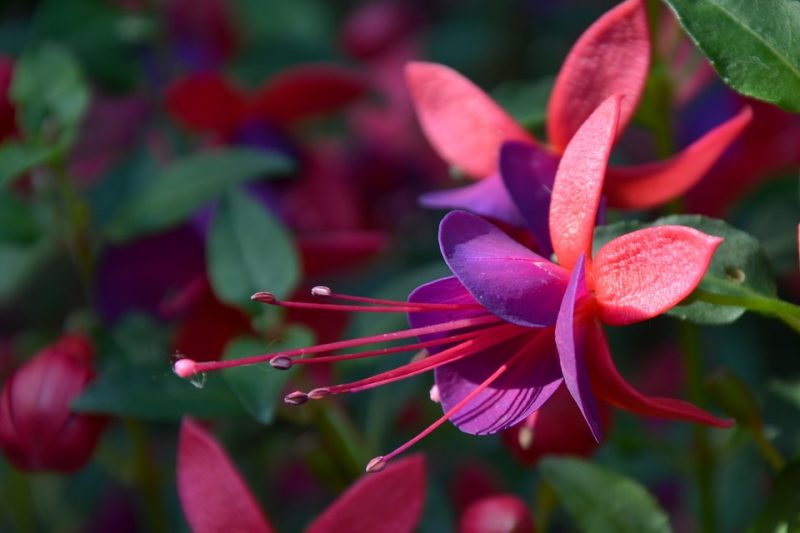
Fuchsia (Fuchsia spp.) is a plant native to South America (Chile, Brazil), Mexico, and New Zealand.
Fuchsia has the appearance of a bush. The leaves are simple and lanceolate, while the flowers are bell-shaped and colored in different shades.
Species and cultivars
Fuchsia globosa – is a species that can exceed 1 m in height. It has elongated leaves and hanging flowers, which gives them an earring-like appearance. The calyx (the sepals of the flower) can be white, pink, red, or lilac, depending on the cultivar. The corolla (the inner lining of the flower) is brightly colored.
Fuchsia fulgens – the flowers are made up of red sepals, tubular in shape, and have 5-6 cm. At the top are bright red petals.
Fuchsia coccinea – has sharp, oval leaves. The flowers are hanging, small, and red.
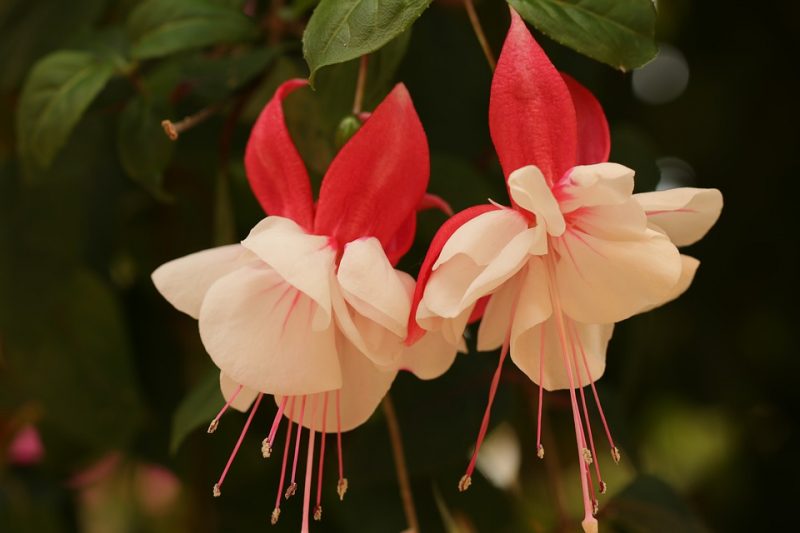
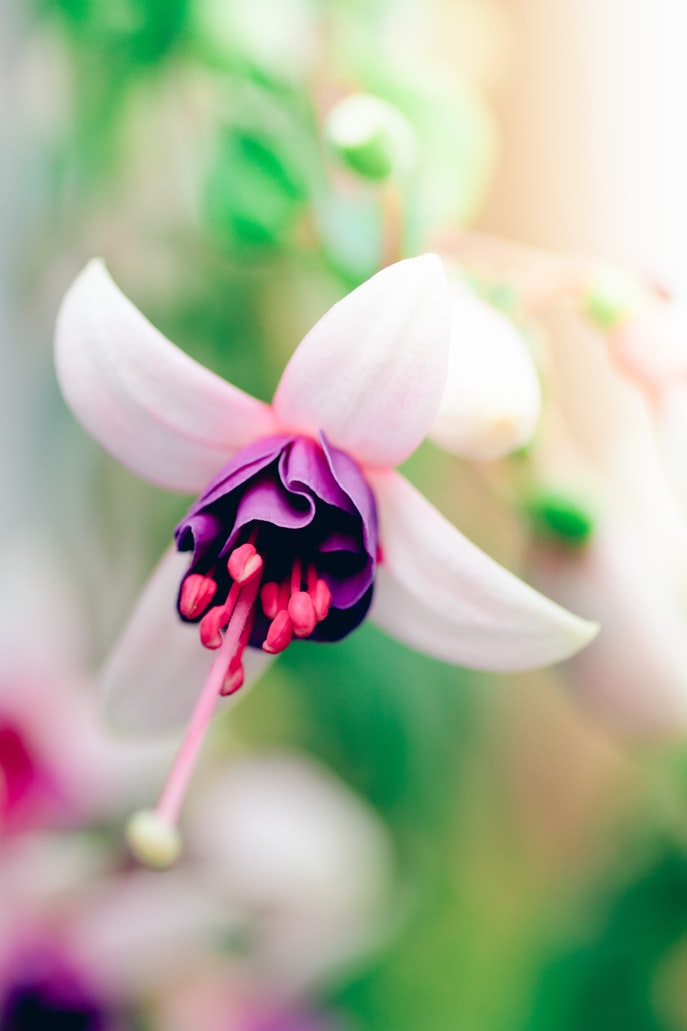
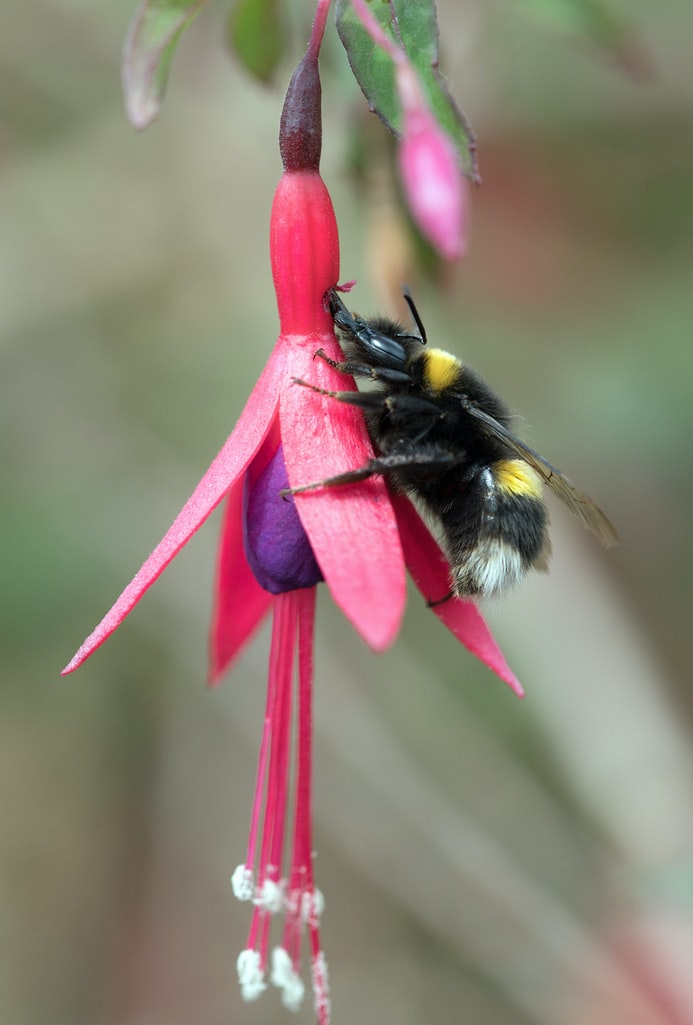
Environmental conditions
Light. Fuchsia is a light-loving plant but does not prefer direct sunlight. During the summer it can be placed in shady, well-ventilated spaces.
Temperature. Fuchsia prefers moderate temperatures (18-22° C). At temperatures above 24° C, the flowering can be affected.
Humidity. It prefers a relative humidity of over 70%. To increase the atmospheric humidity, it is recommended to spray the plant periodically with water.
Substrate. A light substrate, with a neutral pH and a high humus content, is recommended, a substrate that allows good water drainage.
Recommended products
-
You can find products on a different store
Change Store -
You can find products on a different store
Change Store -
You can find products on a different store
Change Store -
You can find products on a different store
Change Store -
You can find products on a different store
Change Store -
You can find products on a different store
Change Store -
You can find products on a different store
Change Store -
You can find products on a different store
Change Store -
You can find products on a different store
Change Store -
You can find products on a different store
Change Store -
You can find products on a different store
Change Store -
You can find products on a different store
Change Store -
You can find products on a different store
Change Store -
You can find products on a different store
Change Store -
You can find products on a different store
Change Store -
You can find products on a different store
Change Store -
You can find products on a different store
Change Store -
You can find products on a different store
Change Store -
You can find products on a different store
Change Store -
You can find products on a different store
Change Store -
You can find products on a different store
Change Store -
You can find products on a different store
Change Store -
You can find products on a different store
Change Store -
You can find products on a different store
Change Store
Care
Watering. Fuchsia requires regular watering during the summer so that the substrate is maintained damp. The plant does not tolerate excessive moisture. It prefers higher atmospheric humidity, so it is recommended to be sprayed periodically. In winter, the amount of administered water should be decreased.
Fertilization. In order to meet the nutritional requirements of the plant during the vegetative period, it is recommended to apply slow-release, complex fertilizers.
Recommended products
-
You can find products on a different store
Change Store -
You can find products on a different store
Change Store -
You can find products on a different store
Change Store -
You can find products on a different store
Change Store -
You can find products on a different store
Change Store -
You can find products on a different store
Change Store -
You can find products on a different store
Change Store -
You can find products on a different store
Change Store -
You can find products on a different store
Change Store -
You can find products on a different store
Change Store -
You can find products on a different store
Change Store -
You can find products on a different store
Change Store -
You can find products on a different store
Change Store -
You can find products on a different store
Change Store -
You can find products on a different store
Change Store -
You can find products on a different store
Change Store -
You can find products on a different store
Change Store -
You can find products on a different store
Change Store -
You can find products on a different store
Change Store -
You can find products on a different store
Change Store -
You can find products on a different store
Change Store -
You can find products on a different store
Change Store -
You can find products on a different store
Change Store -
You can find products on a different store
Change Store
Pruning. In spring, cuttings are done to shorten the branches. Poorly developed shoots and those improperly placed have to be removed. Through pruning, young shoots are encouraged to bloom.
Recommended products
-
You can find products on a different store
Change Store -
You can find products on a different store
Change Store -
You can find products on a different store
Change Store -
You can find products on a different store
Change Store -
You can find products on a different store
Change Store -
You can find products on a different store
Change Store -
You can find products on a different store
Change Store -
You can find products on a different store
Change Store -
You can find products on a different store
Change Store -
You can find products on a different store
Change Store -
You can find products on a different store
Change Store -
You can find products on a different store
Change Store -
You can find products on a different store
Change Store -
You can find products on a different store
Change Store -
You can find products on a different store
Change Store -
You can find products on a different store
Change Store -
You can find products on a different store
Change Store -
You can find products on a different store
Change Store -
You can find products on a different store
Change Store -
You can find products on a different store
Change Store -
You can find products on a different store
Change Store -
You can find products on a different store
Change Store -
You can find products on a different store
Change Store -
You can find products on a different store
Change Store
Repotting
Fuchsia can be planted in pots, planters, or in hanging baskets. If you choose pots, they must be replaced with ones that are big enough, in order to give the plant, the necessary space for root development. Pots should contain drainage holes to avoid water stagnation at the roots.
The substrate used for planting is indicated to contain compost. A mixture of white peat, sand, and perlite is also recommended. Fuchsia should be transplanted in spring in larger pots, and the substrate should be replaced either entirely or only the upper layer.
After transplanting, a rooting stimulator should be administered.
Recommended products
-
You can find products on a different store
Change Store -
You can find products on a different store
Change Store -
You can find products on a different store
Change Store -
You can find products on a different store
Change Store -
You can find products on a different store
Change Store -
You can find products on a different store
Change Store -
You can find products on a different store
Change Store -
You can find products on a different store
Change Store -
You can find products on a different store
Change Store -
You can find products on a different store
Change Store -
You can find products on a different store
Change Store -
You can find products on a different store
Change Store -
You can find products on a different store
Change Store -
You can find products on a different store
Change Store -
You can find products on a different store
Change Store -
You can find products on a different store
Change Store -
You can find products on a different store
Change Store -
You can find products on a different store
Change Store -
You can find products on a different store
Change Store -
You can find products on a different store
Change Store -
You can find products on a different store
Change Store -
You can find products on a different store
Change Store -
You can find products on a different store
Change Store -
You can find products on a different store
Change Store
Propagation. It multiplies through cuttings obtained from early shoots, in spring or at the end of summer. Seedlings should be 10-12 cm long and should have 2-3 pairs of leaves. For rooting, the cuttings must be planted in a mixture of peat and sand. They should be kept in a bright space, protected from direct sunlight. The first roots will appear in about 3 weeks, and after that, the new plants have to be moved to larger pots with fresh soil.
Recommended products
-
You can find products on a different store
Change Store -
You can find products on a different store
Change Store -
You can find products on a different store
Change Store -
You can find products on a different store
Change Store -
You can find products on a different store
Change Store -
You can find products on a different store
Change Store -
You can find products on a different store
Change Store -
You can find products on a different store
Change Store -
You can find products on a different store
Change Store -
You can find products on a different store
Change Store -
You can find products on a different store
Change Store -
You can find products on a different store
Change Store -
You can find products on a different store
Change Store -
You can find products on a different store
Change Store -
You can find products on a different store
Change Store -
You can find products on a different store
Change Store -
You can find products on a different store
Change Store -
You can find products on a different store
Change Store -
You can find products on a different store
Change Store -
You can find products on a different store
Change Store -
You can find products on a different store
Change Store -
You can find products on a different store
Change Store -
You can find products on a different store
Change Store -
You can find products on a different store
Change Store
Propagation can also be done through seeds, in March-April. The seeds should be sown in smaller pots and covered with a layer of moist compost. The seeds are then left in a space protected from the sun, at a temperature of 20-22° C until sprouting. The sprouted plants should then be moved into larger pots.
Diseases and pests
The most common disease that can affect Fuchsia is rust. The main pests are aphids, wooly apple aphids, and mites.
In addition:
- in summer, when it is very hot, it is recommended to spray the plants with water. This will prevent the leaves from falling.
- insufficient or excessive watering and insufficient light can cause buds to fall.
- in order to ensure a proper air circulation and to avoid the occurrence of diseases and pests, it is indicated to place the plants at a suitable distance from each other.
- the species of Fuchsia with orange or red flowers tolerate heat better than those with white or blue flowers.














































































































































































































































































































































































































































